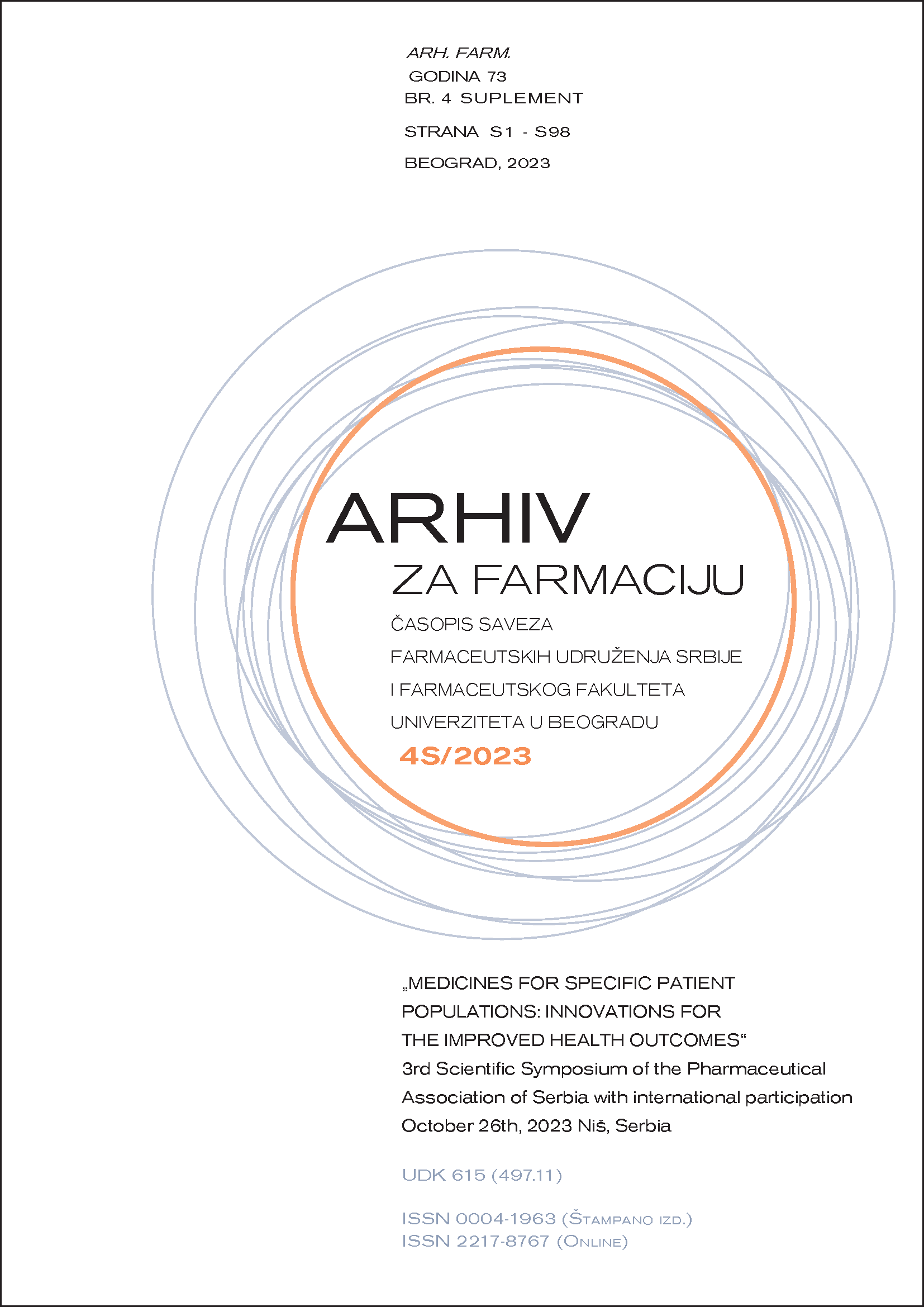IN VITRO ASSESSMENT OF ANTIOXIDANT ACTIVITY OF TETRAHYDRO-BENZO[4,5]THIENO[2,3-D]PYRIMIDINES
Abstract
Oxidative stress is involved in numerous pathological states including inflammation, atherosclerosis, diabetes, cancer, neurodegenerative disorders, cardiovascular disorders and other chronic conditions (1). For over three decades numerous studies have highlighted the health benefits of antioxidants and their role in the prevention and treatment of diseases resulting from oxidative damage (2). Thieno[2,3-d]pyrimidine derivatives display a wide range of biological activities such as anti-tumor, anti-inflamatory, anti-diabetic that could be all strongly related to the antioxidant activity interplay. The in vitro antioxidant properties of already synthetized and characterized compounds: eleven thieno[2,3‐d]pyrimidine-4-amines (3) and six thieno[2,3‐d]pyrimidine-4-phthalimides (4) by using lipid peroxidation method were evaluated in order to assess their capacity. The obtained results indicated that among tested thieno[2,3-d]pyrimidines only two compounds 2-(pyridin-2-yl)-5,6,7,8-tetrahydrobenzo[4,5]thieno[2,3-d]pyrimidin-4-amine (compound 11) and 2-(2-(pyridin-2-yl)-5,6,7,8-tetrahydrobenzo[4,5]thieno[2,3-d]pyrimidin-4-yl)isoindoline-1,3-dione (compound 17) exhibit antioxidant properties, having IC50 = 90 ± 4 μM and IC50 = 165 ± 40 μM, respectively. However, none of the compounds demonstrated antioxidant activity comparable to that of standard antioxidants, Trolox, caffeic acid and quercetin. A common structural feature of both compounds exhibiting inhibition of lipid peroxidation, compared to other compounds involved in this study, is the 2-substituted pyridin-2-yl thieno[2,3-d]pyrimidine core. Before reaching a firm conclusion, larger number of thieno[2,3-d]pyrimidine-4-amines and thieno[2,3-d]pyrimidine-4-phthalimides with pyridinyl moieties should be included, and in this context we will continue to expand our research in future.
References
1. Beckhauser TF, Francis-Oliveira J, De Pasquale R. Reactive oxygen species: physiological and physiopathological effects on synaptic plasticity. J Exp Neurosci 2016; 10(Suppl 1): 23-48.
2. Collin F. Chemical basis of reactive oxygen species reactivity and involvement in neurodegenerative diseases.Int J Mol Sci 2019; 20(10): 2407.
3. TsMavrova A, Dimov S, Yancheva D, Kolarević A, Ilić BS, Kocić G, Šmelcerović A. Synthesis and DNase I inhibitory properties of some 5,6,7,8-tetrahydrobenzo[4,5]thieno[2,3-d]pyrimidines. Bioorg Chem 2018; 80: 693-705.
4. Tomovic K, Ilic BS, Miljkovic M, Dimov S, Yancheva D, Kojic M, Mavrova AT, Kocic G, Smelcerovic A. Benzo[4,5]thieno[2,3-d]pyrimidine phthalimide derivative, one of the rare noncompetitive inhibitors of dipeptidyl peptidase-4. Arch Pharm (Weinheim) 2020; 353(1):e1900238.

